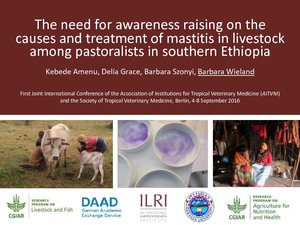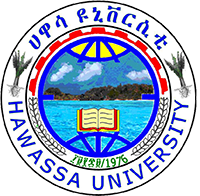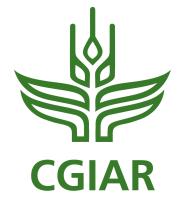Resource information
Ethiopia has high prevalence of clinical and subclinical mastitis in different livestock
species and production systems and these contribute substantially to poor
productivity in affected herds. Thus far, studies have focused on identification of
microbial pathogens and associated risk factors for mastitis. However, relatively little
is known about the knowledge and beliefs of livestock keepers regarding prevailing
livestock health problems in general and mastitis in particular. An accurate
understanding of these beliefs would be central to the design of effective disease
control programs that give due consideration to the livestock keepers. As a first step,
we set out to conduct a qualitative study aimed at exploring the knowledge and belief
surrounding the causes, clinical signs and treatments for mastitis in (agro-) pastoral
communities in southern Ethiopia. In four village administrations of Yabello district of
Borana zone, different participatory tools were used to collect qualitative data.
Individual interviews were held with 40 women using a pre-tested semi-structured
questionnaire guide. Four focus group discussions with women were also carried out
(one in each village) and informal discussion were held with different community
members. The data was analysed qualitative by repeated reading to identify different
themes. Mastitis is locally known as ‘dhukkuba muchaa”, which translates to ‘disease
of teats’. Those interviewed classified mastitis into three types: (1) tick infestation
(dirandisa), (2) swelling of udder often with pus discharge (nyaqarsa) and (3) acute
mastitis caused by ‘evil eye’ (buda) associated with bloody milk. Tick infestation was
perceived to directly cause mechanical damage to udder tissue or to result in swelling
leading to nyaqarsa. Our analysis also revealed a strong perception that acute
mastitis is caused by 'evil eye'; generally affected cows are with large udders mostly
during late pregnancy and early lactation. The pastoralists often treat mastitis by
combining both modern and traditional methods. Hand removal and acarcide
application were the preferred methods for limiting tick infestation while swelling and
‘evil eye’ cases were treated with antibiotics (e.g. oxytetracycline). The study also
revealed that specific herbs, only known by the herbalists, were used for traditional
treatment of mastitis and although this information could not be divulged at the time,
it should form the subject of further investigation. Traditional treatment for evil eye
was often administered through nostrils, raising questions about its effectiveness. It is
interesting that the pastoralists associated mastitis to tick infestation which is
compatible with existing scientific evidence. However, the misperception of causes
for acute mastitis as ‘evil eye’ can be problematic as far as the application of
appropriate treatment and management of the disease is concerned and highlights
the need for capacity building on causes of mastitis and how they can be treated.



